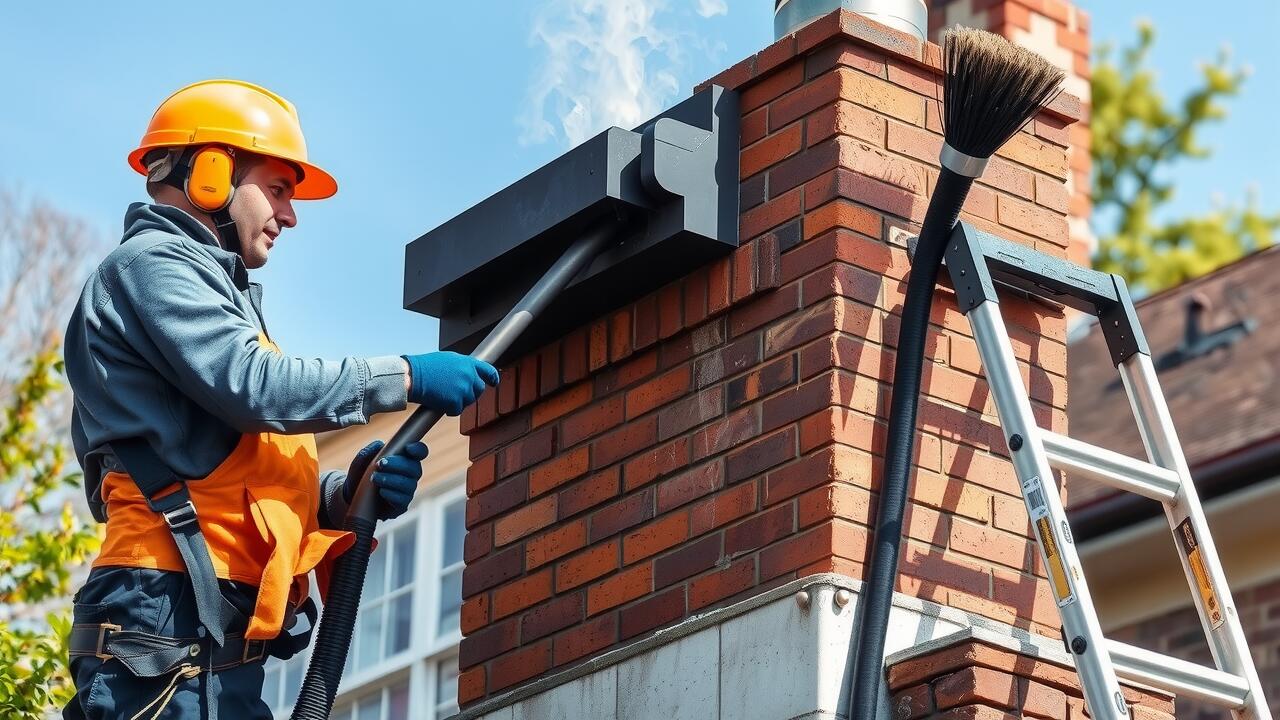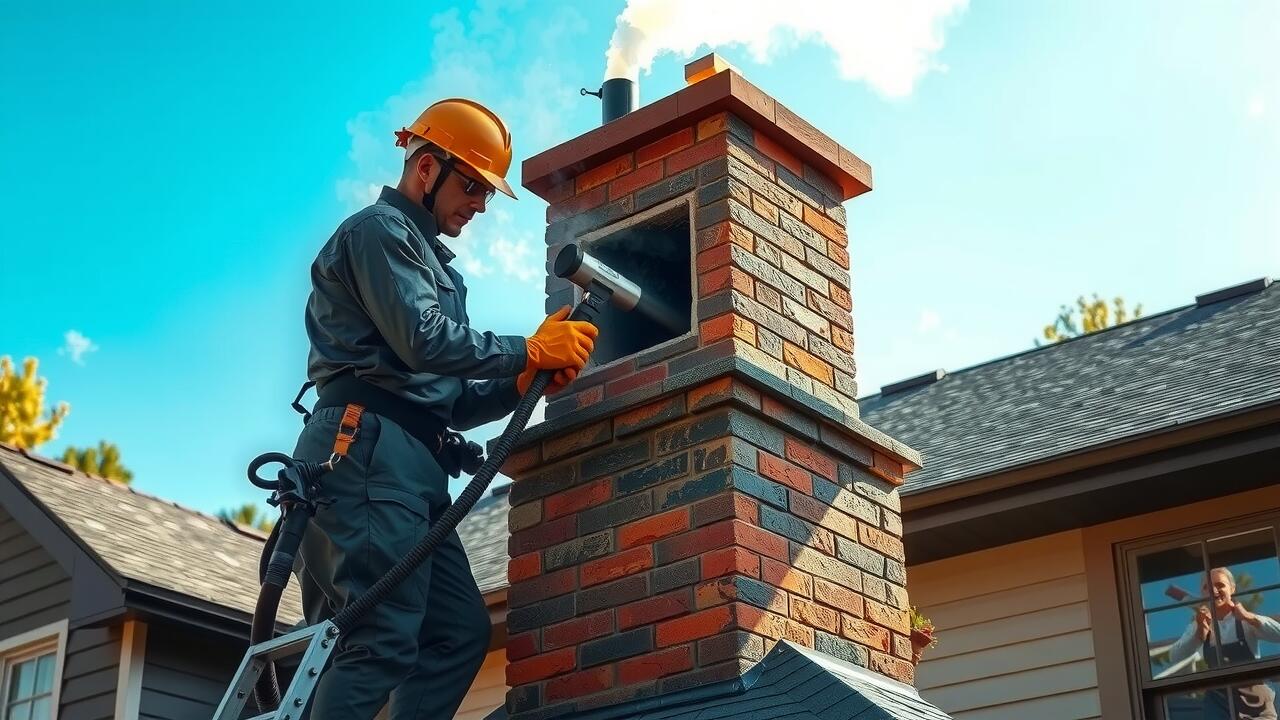
At Express Air Duct Cleaning San Antonio, we understand the importance of maintaining a safe and efficient home environment, which is why our chimney cleaning service is essential for every homeowner. Our team of skilled professionals utilizes advanced techniques and equipment to thoroughly clean and inspect your chimney, removing soot, creosote, and other debris that can pose fire hazards and compromise air quality. Regular chimney maintenance not only enhances the efficiency of your heating system but also ensures that your home remains safe for you and your family. Trust Express Air Duct Cleaning San Antonio to provide top-notch chimney cleaning services that prioritize your safety and comfort.
Frequency of Chimney Inspections
Regular inspections of chimneys are essential for maintaining safety and ensuring efficient operation. The National Fire Protection Association (NFPA) recommends having a professional chimney sweep inspect your chimney at least once a year. This frequency allows technicians to assess the condition of the flue, check for blockages from debris like soot, creosote, or even nests from birds. Regular maintenance is crucial to prevent chimney fires and ensure proper combustion, especially in homes using gas or wood-burning appliances.
Homeowners should also be aware of specific indicators that may necessitate more frequent inspections. Signs such as increased smoke in the home, a strong odor of creosote, or visual deterioration of the chimney structure suggest there may be a serious issue. Additionally, post-storm checks are important if heavy rain or strong winds could have dislodged roof materials or added debris to the flue. Keeping these considerations in mind allows homeowners to take proactive steps to maintain chimney safety and functionality.
Guidelines for Homeowners
Regular inspections play a crucial role in maintaining a safe home environment. Homeowners should aim for at least one annual chimney inspection, regardless of the usage frequency of fireplaces and wood stoves. This helps in identifying potential issues before they escalate. Flammable creosote buildup is a common concern, and a timely evaluation can prevent dangerous fires. Utilizing a flashlight during inspections allows for a thorough visual assessment of the flue and surrounding areas.
Proper maintenance practices help safeguard against structural damage and fire hazards. Homeowners should keep the area around the chimney clear of furniture and other flammable materials. Using a spray bottle with a mixture of water and mild detergent aids in the crafting of a safer workspace when needed. It’s important to be aware of warning signs like smoke issues or unusual odours, which may indicate blockages or other problems requiring professional attention. For peace of mind, enlisting certified chimney professionals enhances safety and ensures compliance with local regulations.
Common Chimney Issues
Chimneys can develop a variety of issues that pose risks to safety and efficiency. One common problem is creosote buildup, a highly flammable byproduct of burning wood that can lead to chimney fires if left unchecked. Homeowners should look for signs of creosote, including a shiny, tar-like substance in the flue or a strong odor emanating from the fireplace. Regular inspections and cleanings are essential to reduce this risk. Additionally, obstructions such as animal nests can block airflow, resulting in dangerous conditions like carbon monoxide buildup in the home.
Another issue to be aware of is the presence of efflorescence, which appears as white, powdery deposits on brick chimney walls. This is often a sign of water intrusion, indicating that moisture is seeping through the structure. Over time, this can lead to significant damage, weakening the integrity of the chimney. Homeowners should be vigilant in monitoring their chimneys for signs of water damage and should consider waterproofing options to protect against future issues. Regular maintenance and the use of chimney caps can help keep these problems at bay, ensuring safer and more effective operation.
Recognizing Structural Damage
Signs of structural damage in a chimney can manifest in various ways. Homeowners should be vigilant and look for cracks in the masonry, which may indicate foundational problems. A leaning chimney is another clear indicator of potential issues. Any visible separation between the chimney and the roofline can signal substantial deterioration, necessitating immediate professional evaluation.
Water damage is a prevalent concern that can lead to extensive structural issues if not addressed. Moisture infiltration can erode the flue liners and compromise the integrity of the chimney. Soot buildup may also accompany structural problems, increasing the risk of chimney fires. Regular inspections by a certified chimney sweep are crucial to identify these hazards and ensure safe operation of wood-burning stoves and fireplaces.
Types of Chimneys and Their Maintenance
Chimneys come in various materials and structures, each requiring specific maintenance practices. Brick chimneys are commonly found in older homes and offer good durability. Regular inspections are essential to identify any cracks in the firebrick or deterioration in the mortar joints. Metal flues, often associated with modern heating systems, can be more vulnerable to corrosion. They typically require inspection for rust and ensure that screws and joints remain tight to prevent leaks that may allow harmful gases like carbon monoxide to escape into living spaces.
Maintaining cleanliness is crucial, particularly considering the buildup of soot and creosote, which can become a fire hazard. Homeowners should employ appropriate tools, such as a shop vac, to assist in cleaning residual ashes from fires. Additionally, those using heating oil or gas should remain vigilant about flue blockages caused by debris. Regular professional inspections can help mitigate risks related to structural collapse, ensuring the chimney remains safe and functional for use. Proper care not only enhances safety but also prolongs the life of the chimney, preserving the integrity of the entire heating system.
Differences Between Brick and Metal Flues
Brick flues, often found in older homes, provide excellent insulation due to their thick masonry. They can withstand high temperatures and effectively manage creosote buildup, a byproduct of burning firewood. Regular maintenance, such as tuckpointing, is essential to prevent deterioration and ensure they remain structurally sound. Homeowners should be aware that water can penetrate brick, which might lead to issues like cracking or spalling over time.
Metal flues, commonly constructed from stainless steel or copper, are lightweight and can be installed more quickly than their brick counterparts. They are often favored for their resistance to rust and corrosion, making them a durable choice for modern homes. However, proper installation and regular inspections are crucial, as the joints and seams may become weak points over time. Understanding these differences is key in selecting the appropriate option for a specific home environment while considering factors like safety and maintenance.
FAQS
How often should I have my chimney inspected?
It is recommended to have your chimney inspected at least once a year, ideally before the heating season begins, to ensure it’s safe and functioning properly.
What are the common signs that my chimney needs cleaning?
Common signs include excessive soot buildup, a strong odor of creosote, difficulty lighting a fire, or smoke backing up into the room.
Can I clean my chimney myself?
While some homeowners choose to clean their chimneys themselves, it is often best to hire a professional. They have the necessary tools and expertise to ensure the cleaning is done safely and effectively.
What types of damage should I look for when inspecting my chimney?
Look for cracks in the masonry, crumbling bricks, rust or corrosion on metal flues, and any signs of water leaks or structural instability.
What’s the difference between cleaning a brick chimney and a metal flue?
Brick chimneys usually require careful inspection for structural integrity and may need rebuilding if damaged, while metal flues are generally easier to clean and may require different cleaning methods to prevent scratching the surface.


